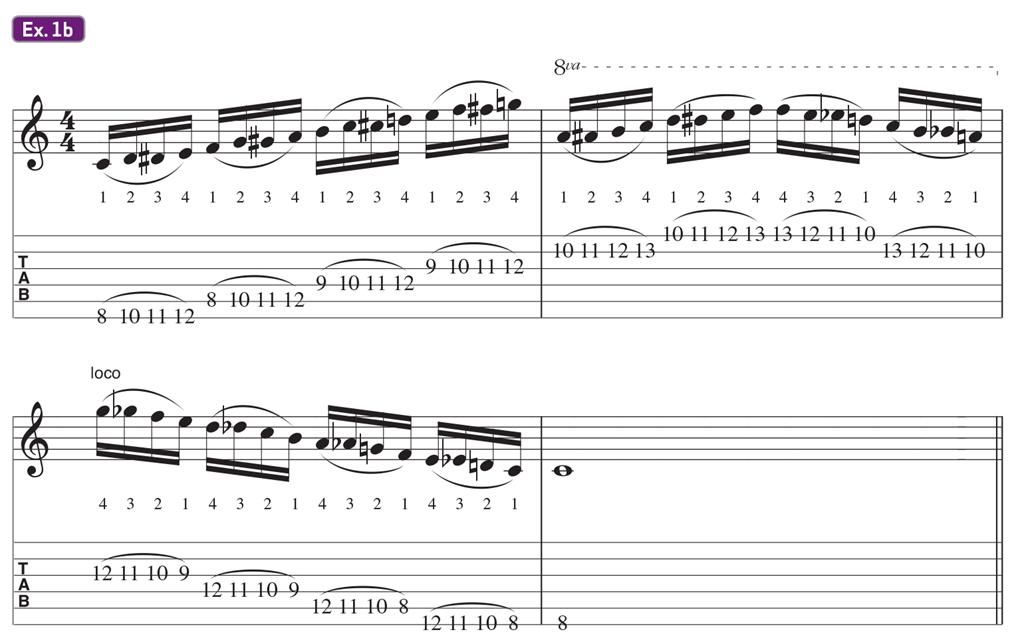How to Chromaticize Diatonic Scales
Applications of this concept are limited only by your fingers, fretboard knowledge, ears, and imagination.

Here's a simple way to “chromaticize” diatonic scales. Take the familiar three-note-per-string C major scale in Ex. 1a, and add a fourth note to each string. The resulting scale, though filled with half-steps, still retains a major tonality, so we’ll call it C chromatic major [Ex. 1b].
A closer look at Ex. 1a reveals that in the major scale, each group of three adjacent notes forms one of three different intervallic shapes (going up from the first note): whole-step/whole-step (bar 1, beat one), whole-step/half-step (bar 2, beat one), and half-step/whole-step (bar 1, beat three).
To convert these three-note diatonic shapes into four-note chromaticized shapes, use the following formula. For the whole-step/whole-step, and the half-step/whole- step shapes, add a note between the second and third notes. For the whole-step/half-step shape, add a note between the first and second notes.

This formula applies not only to the major scale and its related modes, but also to the melodic minor scale (and its related modes) and – with a few exceptions – to the harmonic minor scale (and, you guessed it, its related modes).
Examples 1a and 1b can be played legato (as written) or picked, whichever you prefer. Please bear in mind that these examples, though quite useful, are merely an introduction to this idea of chromaticization.
Ex. 1b will help you get the patterns under your fingers and can serve as a great warm-up exercise. It’s up to you to mix up the groupings and turn them into musical phrases. Applications of this concept are limited only by your fingers, fretboard knowledge, ears, and imagination.

All the latest guitar news, interviews, lessons, reviews, deals and more, direct to your inbox!
